This document provides information on circular linked lists including:
- Circular linked lists have the last element point to the first element, allowing traversal of the list to repeat indefinitely.
- Both singly and doubly linked lists can be made circular. Circular lists are useful for applications that require repeated traversal.
- Types of circular lists include singly circular (one link between nodes) and doubly circular (two links between nodes).
- Operations like insertion, deletion, and display can be performed on circular lists similarly to linear lists with some adjustments for the circular nature.

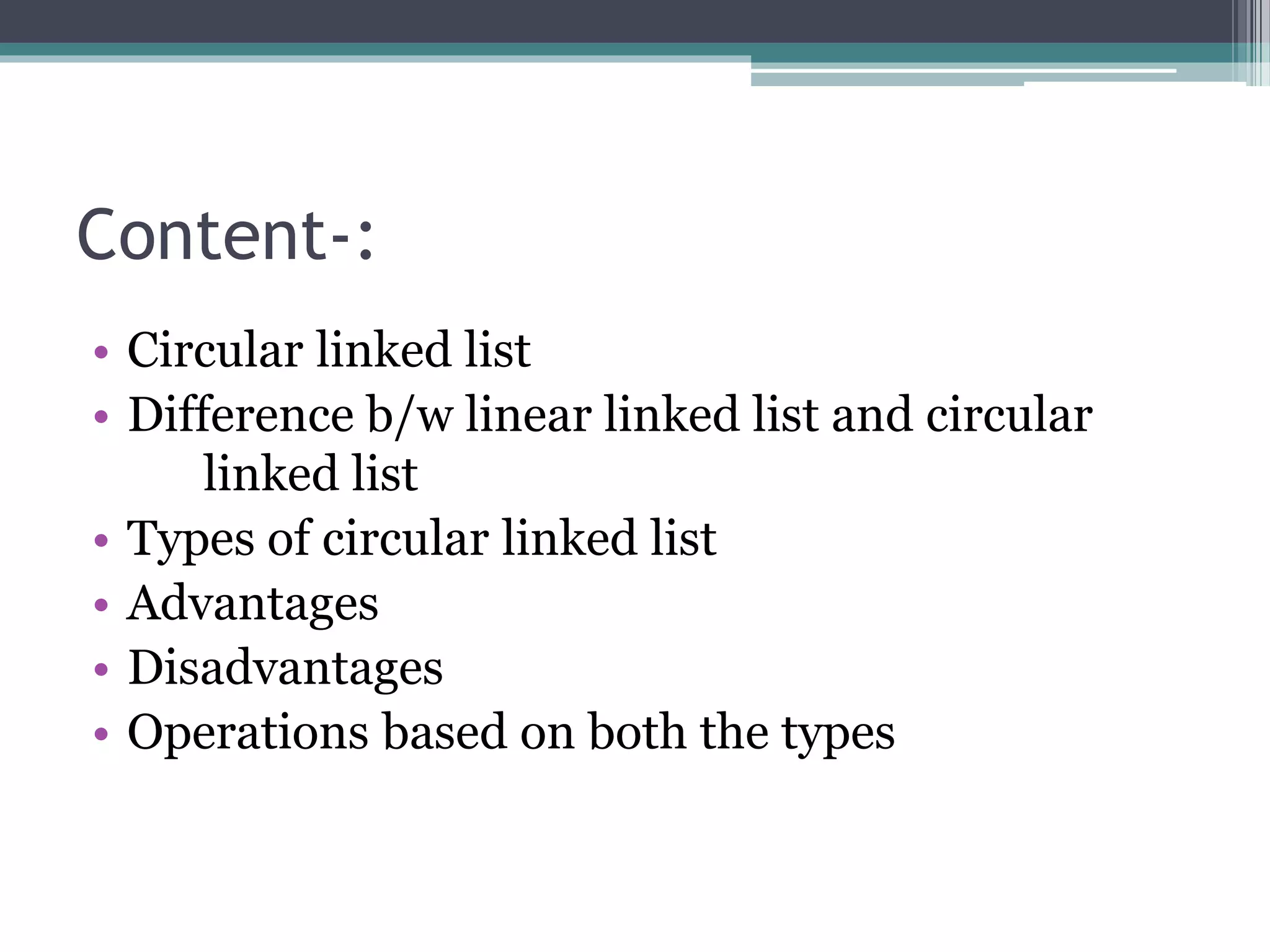

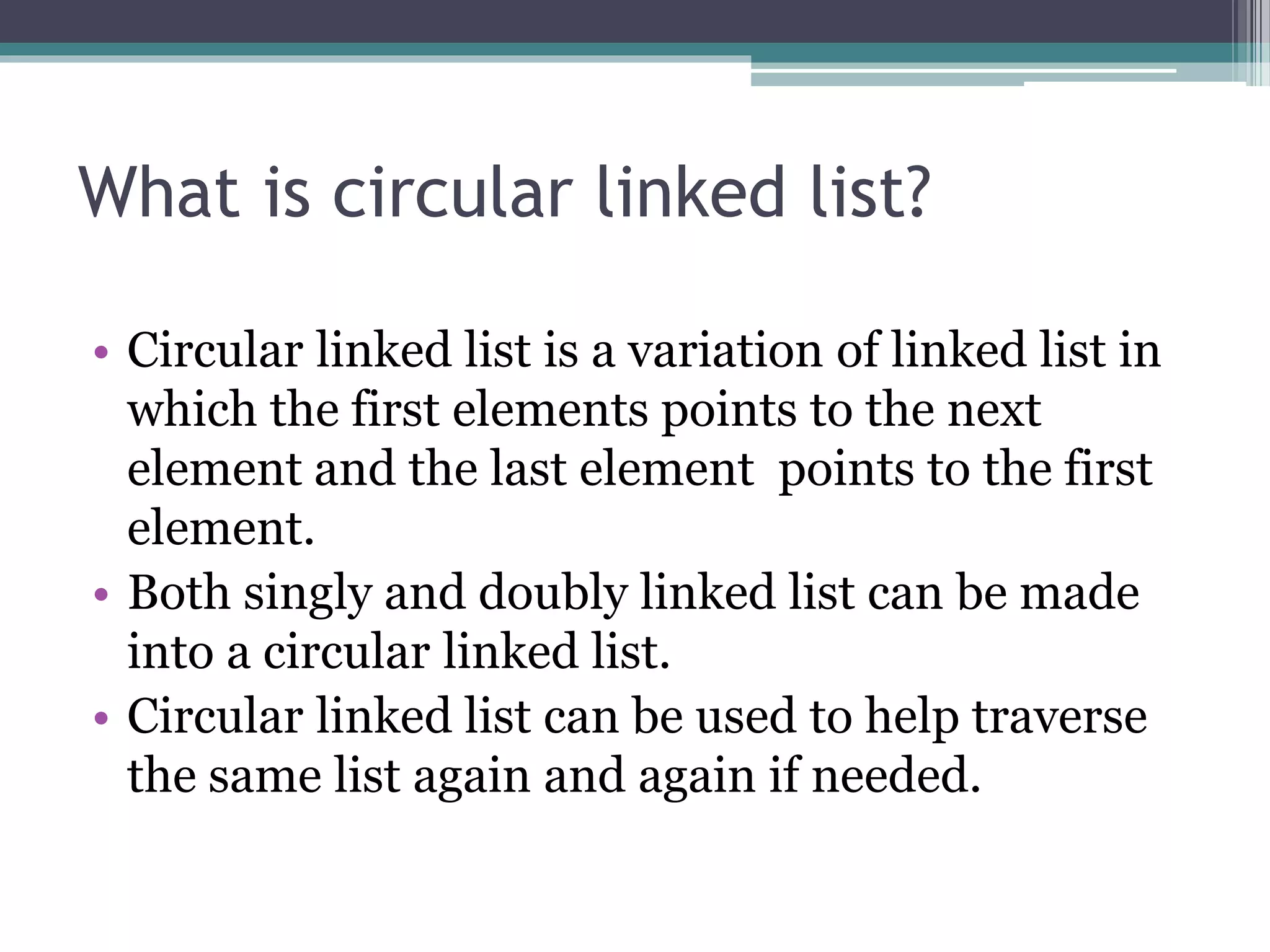
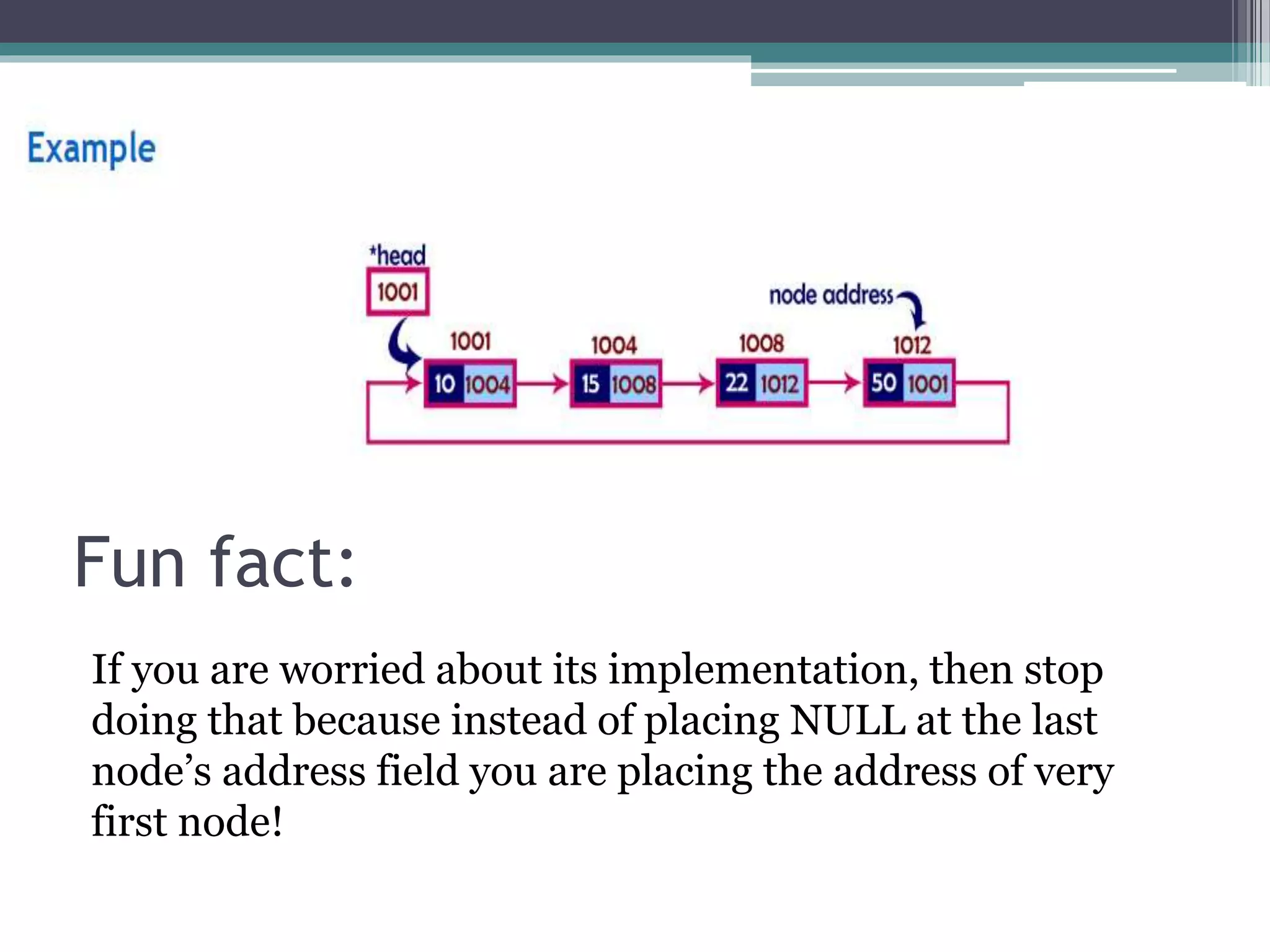



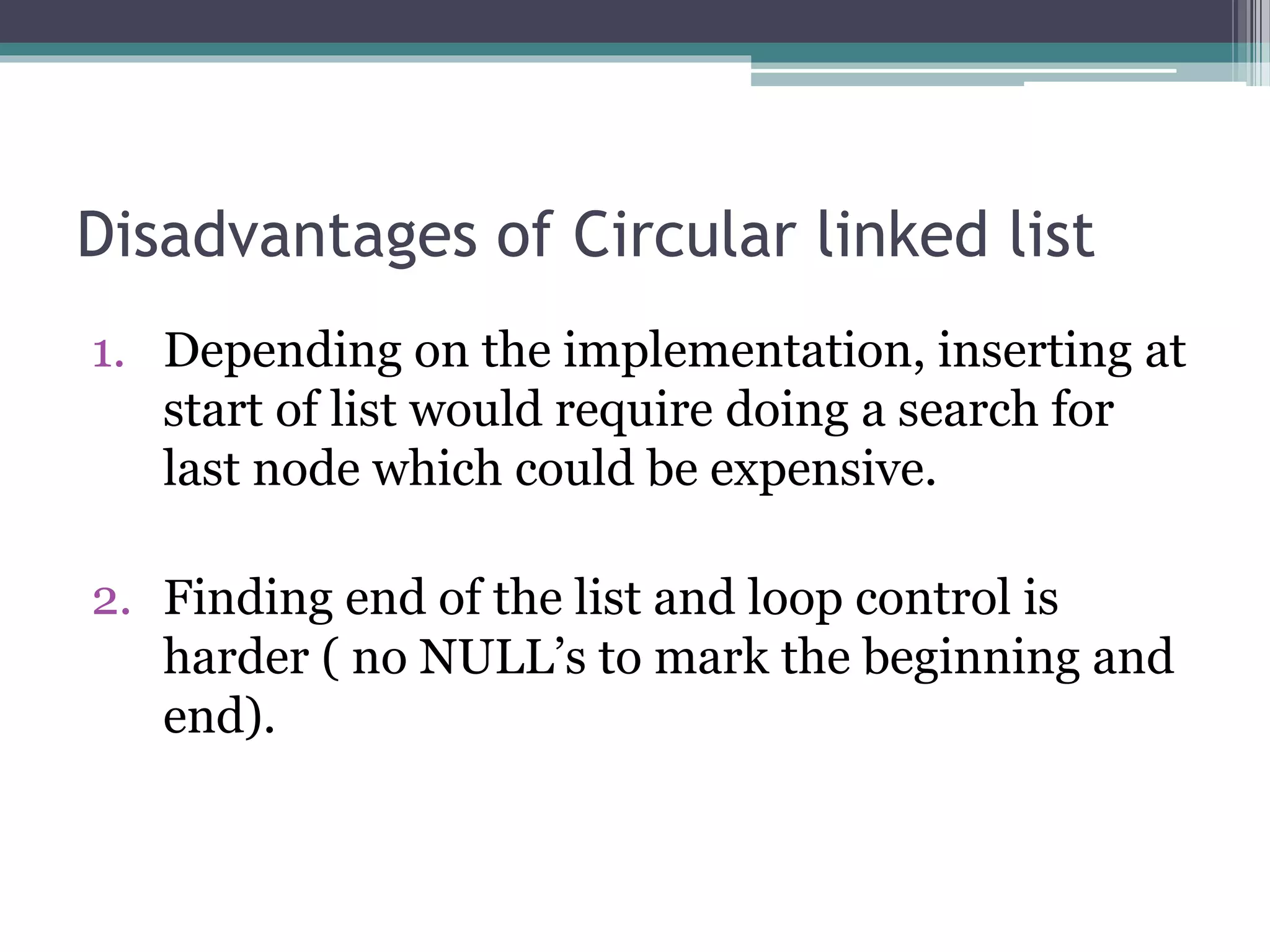


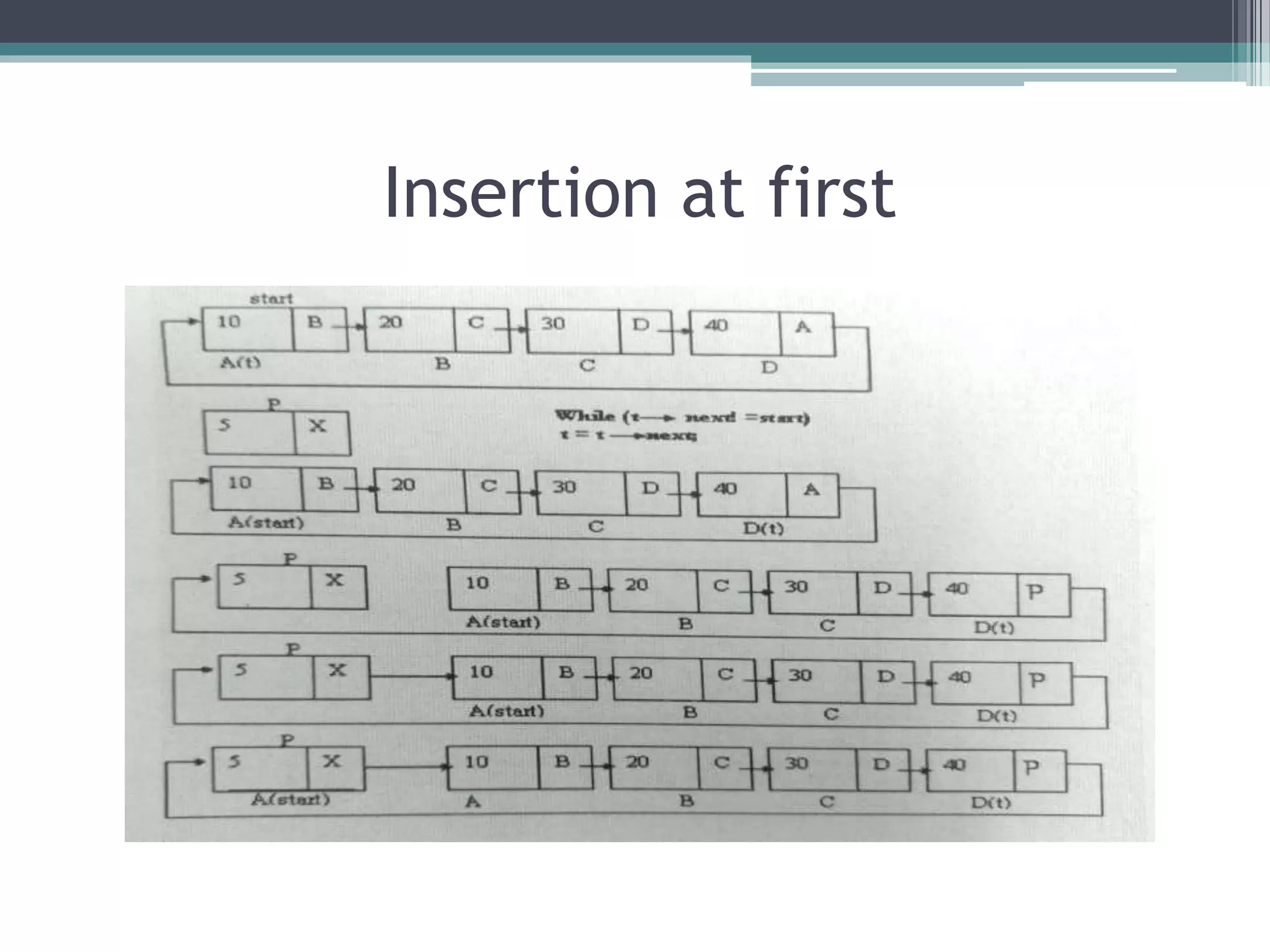

![Algorithm Program
• Repeat step(a)
while(t->next!=start)
▫ (a) set t:=t->next.
• [end of loop]
• Set t->next=n.
• Set start=n. [end if]
• Stop.
if(start==NULL)
{
start=n;
start->next=start;
}
else
{
n->next=start;
while(t->next!=start)
t=t->next;
t->next=n;
start=n;
}](https://image.slidesharecdn.com/circularlinklist-190205164051/75/Circular-link-list-ppt-14-2048.jpg)
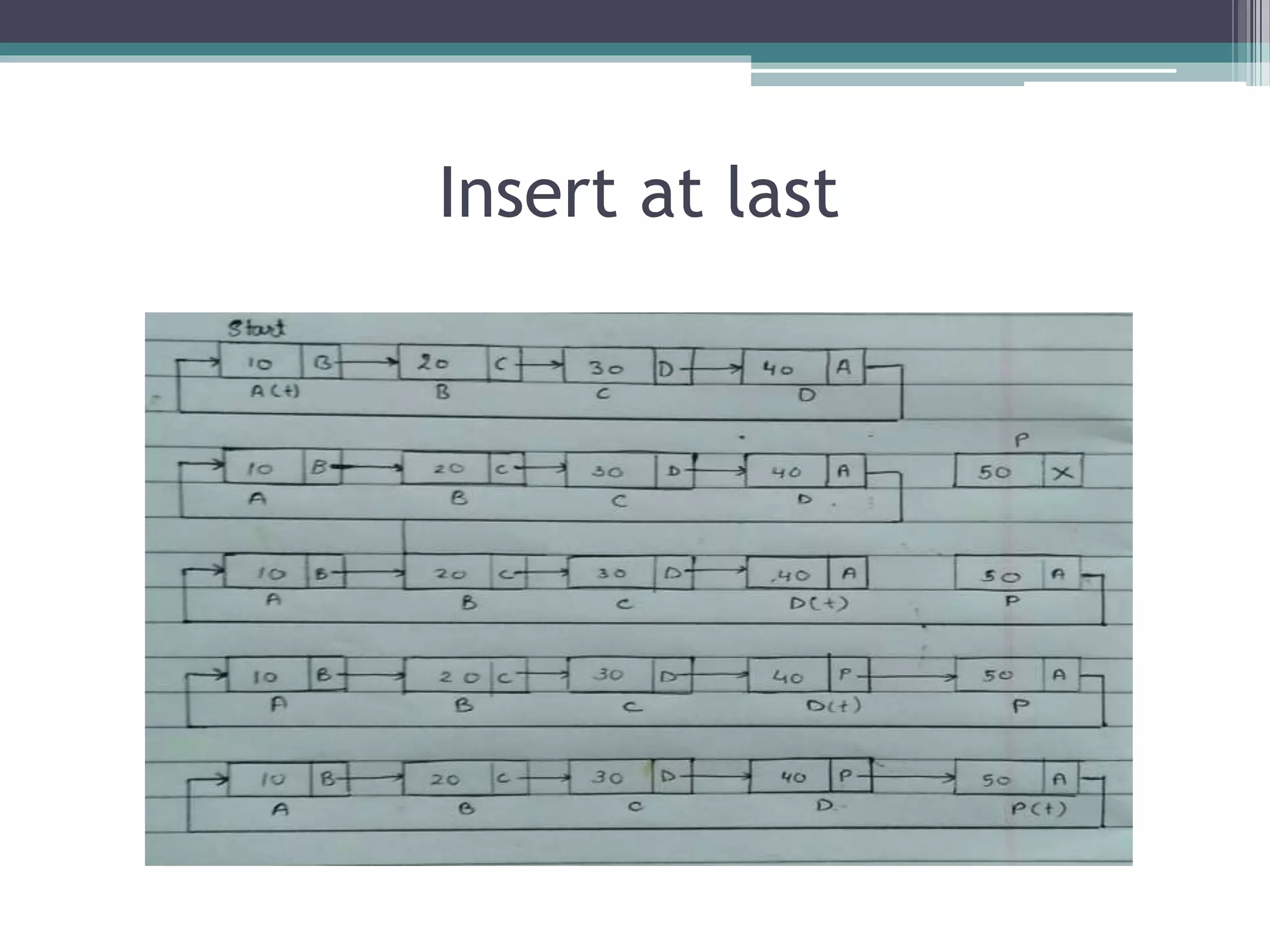
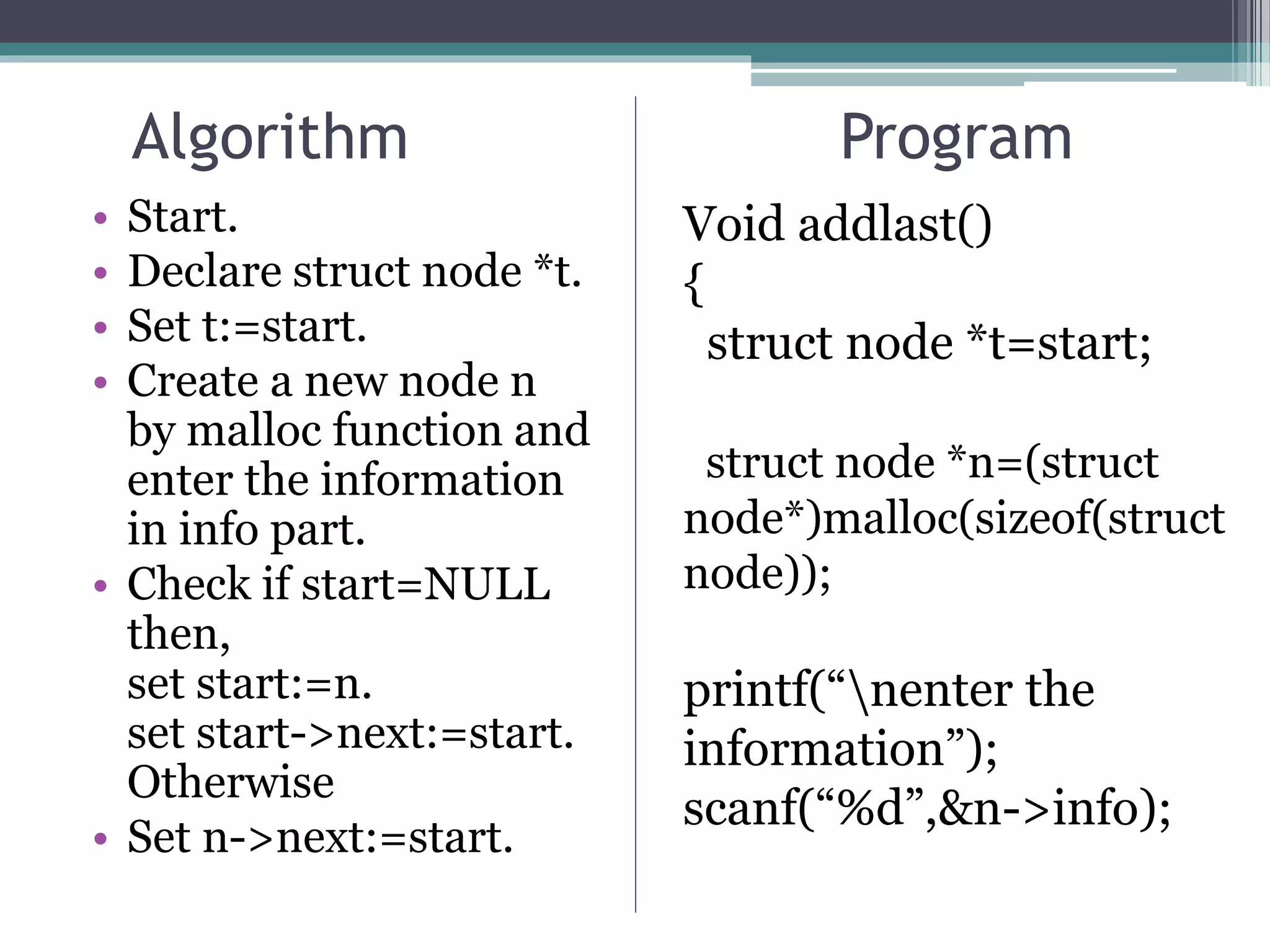
![Algorithm Program
• Repeat step(a)
while(t!=NULL)
▫ (a) set t:=t->next.
• [end of loop]
• Set t->next=n.
[end if]
• Stop.
if(start==NULL)
{
start=n;
start->next=start;
}
else
{
n->next=start;
while(t!=NULL)
t=t->next;
t->next=n;
}](https://image.slidesharecdn.com/circularlinklist-190205164051/75/Circular-link-list-ppt-17-2048.jpg)
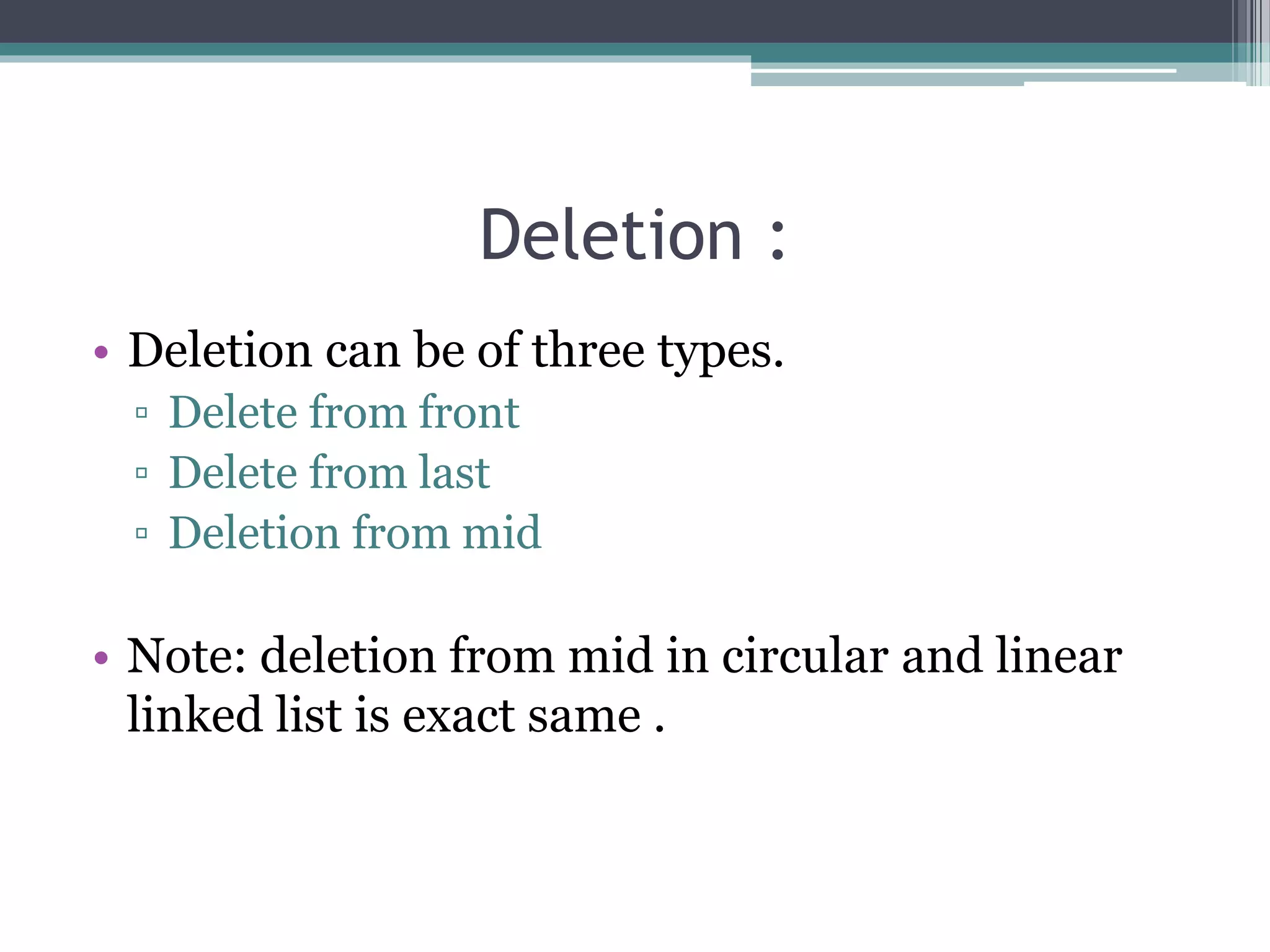
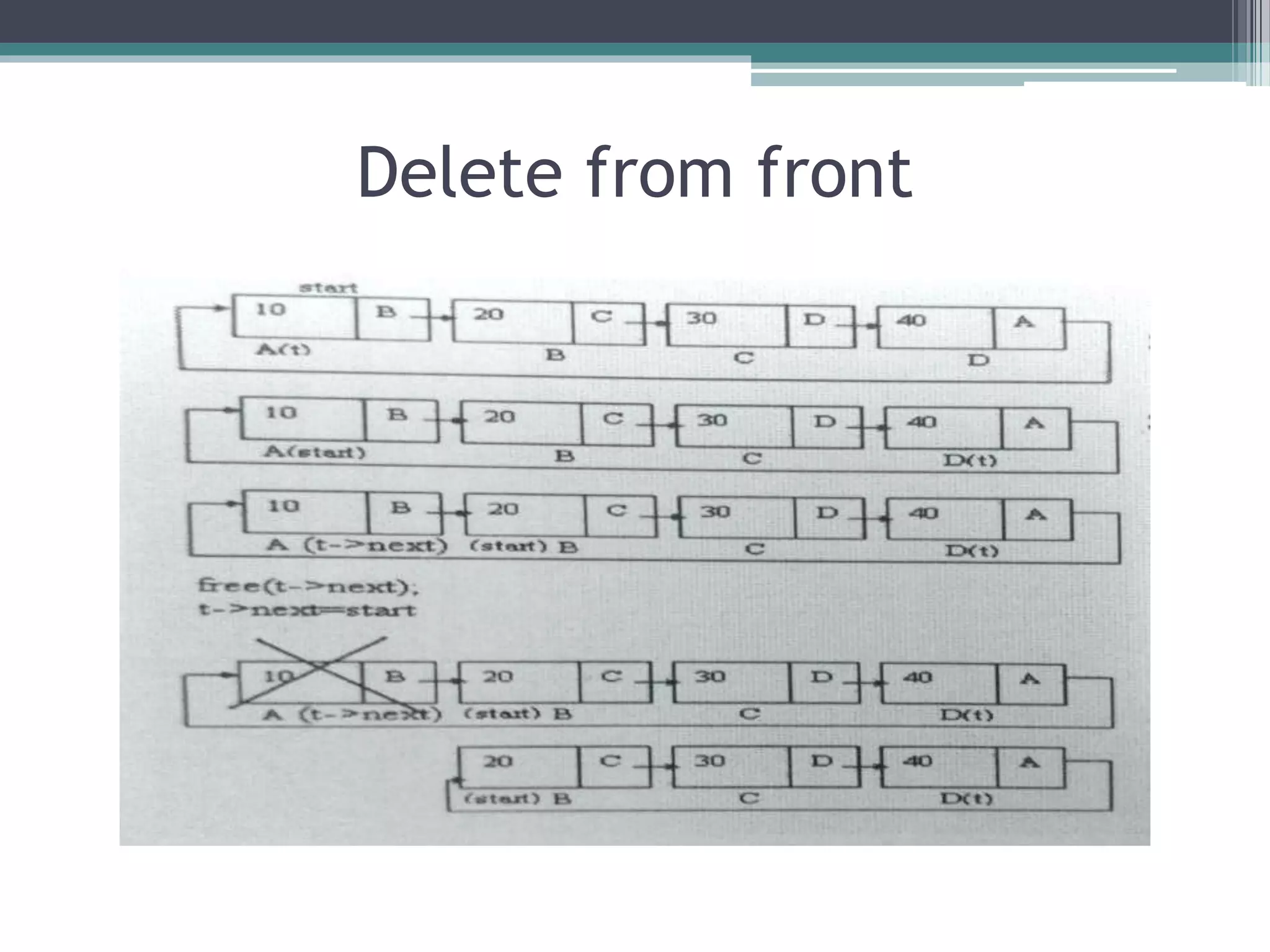
![Algorithm Program
• start.
• Check if (start=NULL)
then,
print “empty list”
• Check if
(start->next=start)
then,
declare free (t)
set start:=NULL
otherwise
• Repeat step(a)
while(t->next!=start)
▫ (a) set t:=t->next
• [end of loop]
Void delfront()
{
struct node *t=start;
if (start==NULL)
printf (“nempty list”);
else if (start->next==start)
{
free (t);
start=NULL;
}
else
{
while(t->next!=start)
t=t->next;](https://image.slidesharecdn.com/circularlinklist-190205164051/75/Circular-link-list-ppt-20-2048.jpg)
![Algorithm Program
• set start:=start-
>next
• Declare free(t-
>next).
• Set t->next:=start.
• [end of if]
• stop
start=start->next;
free(t->next);
t->next=start;
}
}](https://image.slidesharecdn.com/circularlinklist-190205164051/75/Circular-link-list-ppt-21-2048.jpg)

![Algorithm Program
• start.
• Check if (start=NULL) then,
print “empty list”
• Check if (start->next=start)
then,
declare free (t)
set start:=NULL
otherwise
• Repeat step(a)
while(t->next->next!=start)
▫ (a) set t:=t->next
• [end of loop]
• Declare free(t->next).
• Set t->next:=start.
• [end if]
• stop
Void dellast()
{
struct node *t=start;
if (start==NULL)
printf(“nempty list”);
else if (start->next==start)
{
free (t);
start=NULL ;
}
else
{
while(t->next->next!=start)
t=t->next;
free(t->next);
t->next=start;
}
}](https://image.slidesharecdn.com/circularlinklist-190205164051/75/Circular-link-list-ppt-23-2048.jpg)
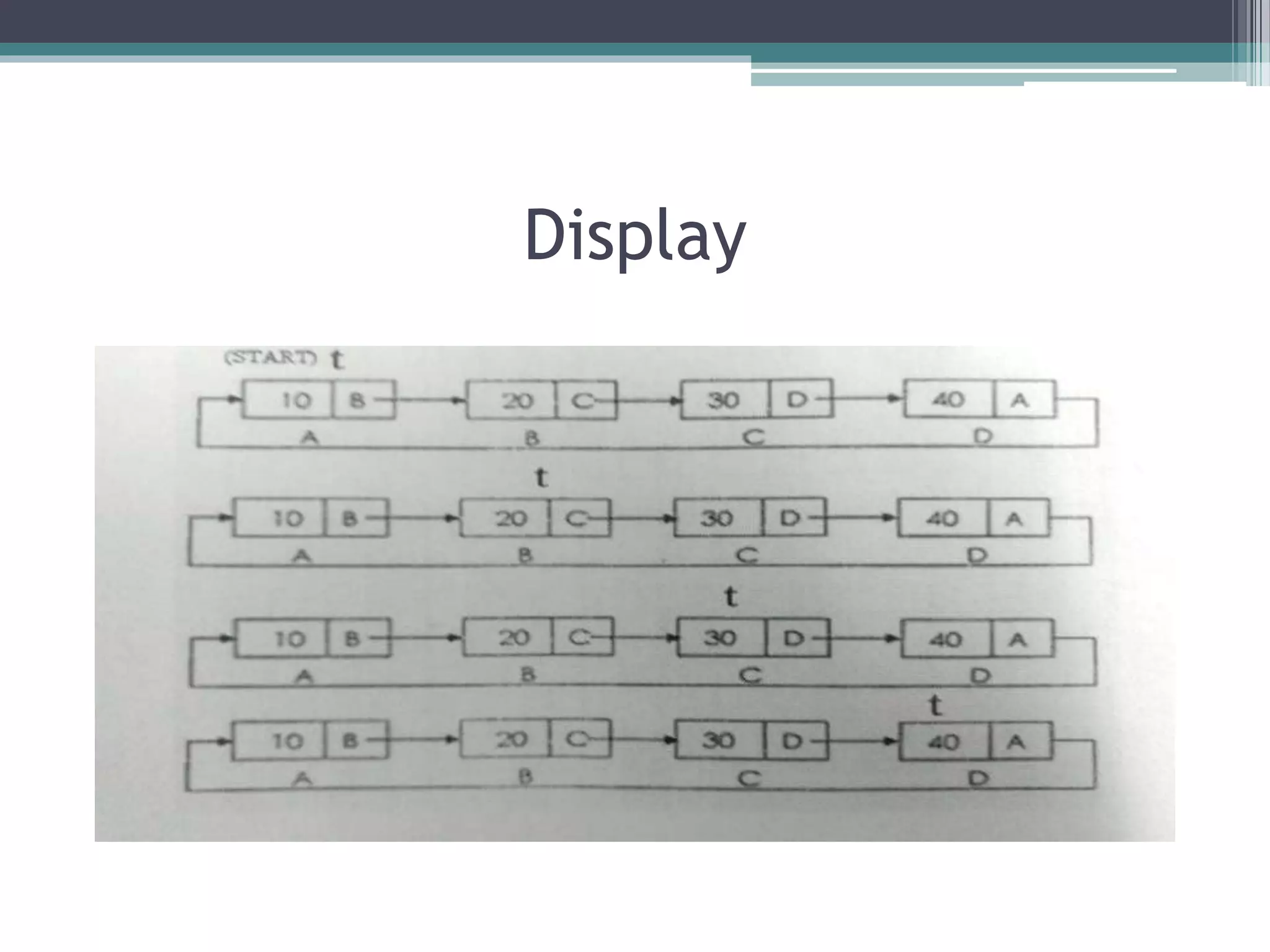
![Algorithm Program
• start.
• Set struct node
*t:=start.
• Check if(start=NULL)
then, print “empty list”
otherwise
• Repeat step a and b
while(t->next!=start)
▫ (a) print t->info
▫ (b) set t:=t->next
• [end of loop]
• Print t->info [end if]
• stop
Void display()
{
struct node *t=start;
if(start=NULL)
printf (“nempty list”);
else
{
while(t->next!=start)
{
printf(“%d”, t->info);
t=t->next;
}
printf(“%d”, t->info);
}
}](https://image.slidesharecdn.com/circularlinklist-190205164051/75/Circular-link-list-ppt-25-2048.jpg)
